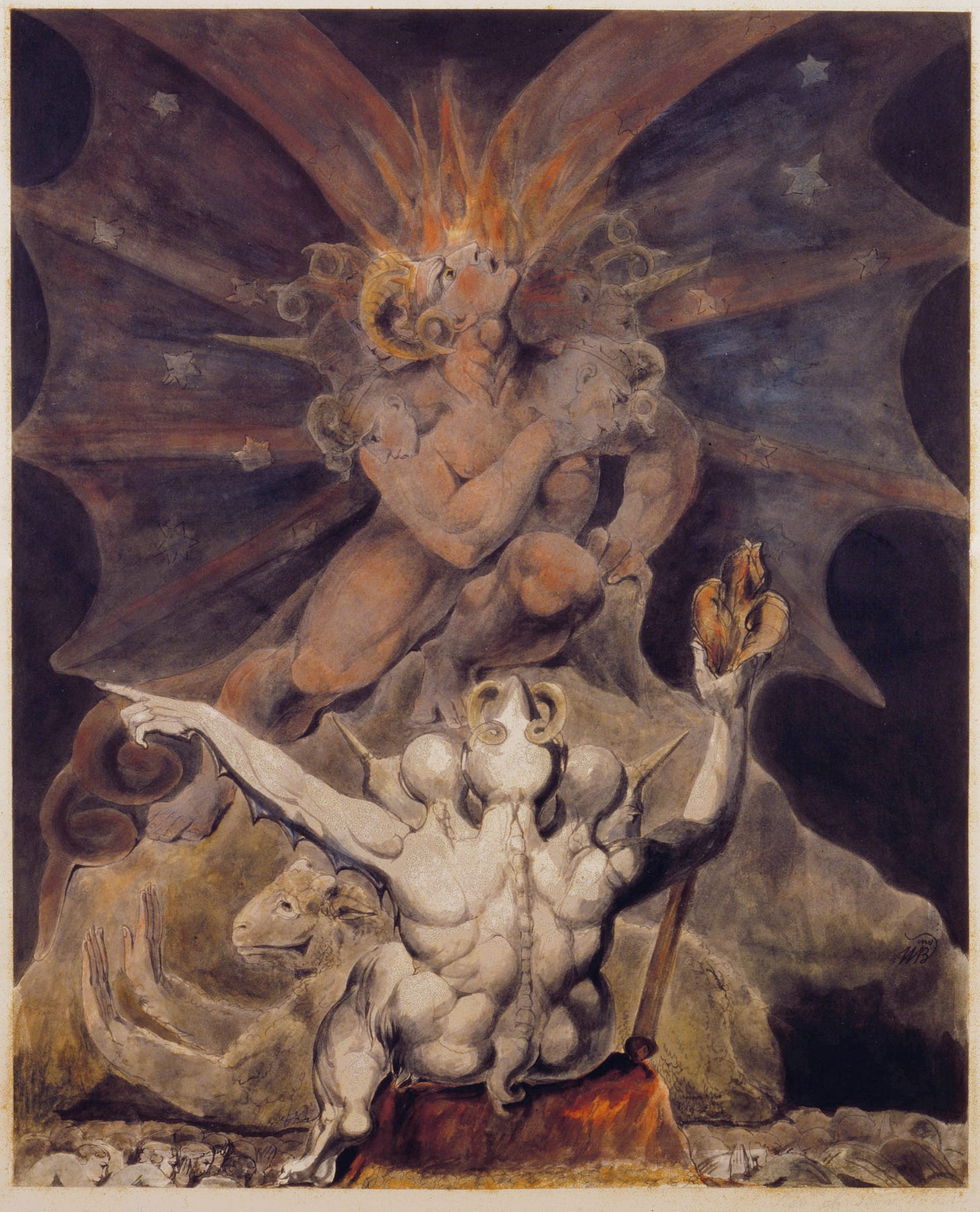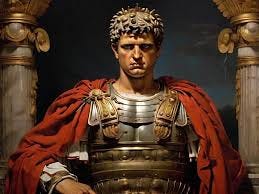“The shadow of Mordor has grown again. It is a black shadow, and it has grown over the land. Sauron has returned, and it is no longer hidden. It has taken shape, and it is bent on the conquest of all that is free in Middle-earth.” - Gandalf The Grey
“The Dark Lord’s return isn’t something you can ignore. You may think you can, but he’s already gathering his followers again, and they’re growing in power.” - Sirius Black
“The beast that you saw was, and is not, and is about to rise from the bottomless pit and go to destruction. And the dwellers on earth whose names have not been written in the book of life from the foundation of the world will marvel to see the beast, because it was and is not and is to come.” - Revelation 17:8
Imagination is a means of knowledge.
In being freed from the confines of raw data the mind is able to see things which previously it could not.
This is why it is the height of spiritual maturity to become as a child — it is the mind of a child which beholds the things unseen.
To be a mystic, a contemplative, is to see by means of belief. It is to be as a child, to behold things which dower-minded data-driven grown-ups cannot.
It is for this reason I perceive art (specifically literature) as a semi-sacred medium. While it is not divinely inspired, literature allows the reader to look at the world from an altered state of mind, beholding that which is symbolic and so that which is ultimately true.
The stories we tell provide insight into embedded truths in the human heart, what we know to be good true and beautiful.
The stories we tell also serve as an introspective tool, revealing to us fears we did not know we had. Fears which seem impossible from a merely materialistic frame, that for some reason persistently exist within the human heart. (Thus showing matter is not the only source of meaning.)
In rewatching Lord of the Rings last month, I was struck by a recurring pattern/fear that exists in high fantasy fiction. That fear is as follows:
a villain/tyrant is destroyed long ago.
A prophecy is uttered about his return, that fades into obscurity.
This villain, though he has no being, through some perverse sorcery is coming back into being.
This villain does all of this to enact a tyranny and to destroy the righteous.
Voldemort, while not a direct parallel to this, follows very similarly. He is slain, yet he is constantly scheming to come back into being, and is doing so with the help of his twisted minions.
After some cursory research, I found there were similar parallels in plenty of other pieces of fiction. (Such as: the Wheel of Time, The Song of Ice and Fire, Mordred from Arthurian Legend, none of which which I know anything about and so will refrain from discussing.)
Even Star Wars has a crude version of this with the return of Emperor Palpatine in Episode IX. (Though I don’t know anyone, fan or otherwise, who would accuse that film of being imaginative and artful.)
This trope reveals a hidden fear of an inverted resurrection — and I am convinced that this is pointing to something real.
I am convinced of this, not because of literature, but because it is what the Scripture teaches.
The beast is depicted as one who “has a mortal wound, yet lives.” (Rev 13:3, 13:12) And as the “one who was, is not, and is about to rise from the bottomless pit.” (Rev 17:8a)
There is sorcery done to animate images of the beast, giving appearances of life to things which are not. (Rev 13:15)
In summary, the beast is parodying the cross and resurrection of Christ, as an attempt to steal worship and glory away from Him. He does this to accrue power for the purpose of persecuting the church.
So, who is this beast?
First, the image of the beast as a whole is more than a man, but it pertains to a man. Rather, the beast is a spiritual reality/power which is made manifest through a man, the man of lawlessness.
Before I continue, allow me to more fully assert this claim through an examination of the symbols as depicted in Revelation 13.
7 heads represent 7 hills and 7 kings/kingdoms ( Revelation 17)
10 horns represent 10 kings (As explained by Daniel 7:24 and Revelation 17)
1 blasphemous horn (king)
1 head with the mortal wound
So it appears the beast is not a man at all, yet at the very end of the image John drops a confounding revelation.
“This calls for wisdom: let the one who has understanding calculate the number of the beast, for it is the number of a man, and his number is 666.” (Rev 13:8)
So the beast, though representing something bigger than a man, has a name of a man (as specified in 13:7) which is represented in the number 666.
To put it simply, the man of lawlessness is the human embodiment of Beastial power.
So what is the beast? The plainest reading of the text indicates Rome. Rome is the city on 7 hills. The man who would become the 10th emperor (Titus) was responsible for the destruction of Jerusalem (a major focus of the Revelation.) Rome was the 6th of the prophesied kingdoms which would persecute Israel/the church. John says there have been 5 heads which have already passed, 1 which is, and 1 which will be. (Rev 17:9-10) (if you want more information on this look into Daniel’s exposition on the beast.)
Rome went through a kind of near-death and resurrection after the demise of Nero potentially reflecting the mortal wound imagery.
Add to this the imperial cult, which demanded worship of the emperor, and it seems abundantly clear that John is writing against the Roman Empire of his day.
So who is the man of lawlessness? If the above interpretation holds true, we can narrow him down to one of the first 10 emperors of Rome. (As he is one of the horns.)
On this basis, one figure immediately rises to the forefront: Nero.
The most ferocious and vile persecutor of the church, Nero lives in infamy to this day.
There is a biblical test we can run to see if this conclusion is correct, that being the number of his name.
Many scholars agree, his name in Greek has the numeric equivalent of 666.1
One of the common objections to this reading is as follows
“Many of the prophecies pertaining to the beast and the man of lawlessness are unfulfilled, so it cannot be that the beast is Rome or that Nero is the man of lawlessness.”2
The answer to this is also contained in the text. John assuredly was writing this after Nero’s demise, and that is seen in how he speaks of this. “He was, is not, and will rise from the bottomless pit.”
He recognized the figure as someone who used to exist, yet does not exist at the time of writing this. This understanding does not exclude future action taken by this figure.
So, in order for us to assert who the man of lawlessness is, he must be someone who existed before John’s writing of Revelation and not during John’s writing.
Meaning the temporal argument is another affirmation of our conclusion regarding Nero.
So, how can the future prophecies be fulfilled?
Nero Redivivus
There is an ancient myth3, one which is obscure and nearly forgotten to the sands of time. This myth was once a widespread belief in Nero’s coming return, or that in some way, Nero never fully died.
Perhaps the Dark Emperor will return. Maybe the Beast of Rome will rise.
It could be that, Nero, through some foul sorcery, will come again to afflict the church.
But he will not prevail.
In the next two articles, I plan to discuss this concept more fully. First, we will examine the second beast, and how allies of darkness are found in unexpected places. Secondly, we will postulate in what ways throughout history the enemy may have schemed to orchestrate the return of this man of lawlessness.
It should be noted, I detest these kind of objections to any interpretation. Those that think in this manner do not comprehend how to read the scripture and would be incapable of drawing historic conclusions regarding the Trinity or the Incarnation directly from the text if they were not readily handed those categories. It is in finding things which appear on the surface to be contradictory that the imaginative mind begins to believe both realities and so discovers the paradox of Christian doctrine.
https://en.wikipedia.org/wiki/Nero_Redivivus




A compelling read. The trope of the dark lord/villain who was defeated and will return is something youth like me noticed in fantasy novels and even games and anime.
And with the advent of artificial intelligence, genetic engineering and cloning, my first thought would be that it would be instrumental in bringing the first beast back.
Brilliant article friend, this stuff is right up my alley! Looking forward to your next two pieces